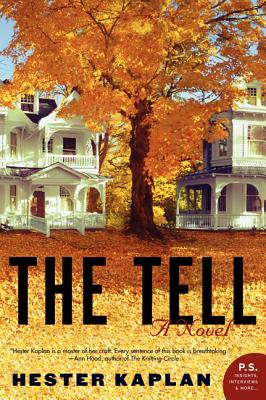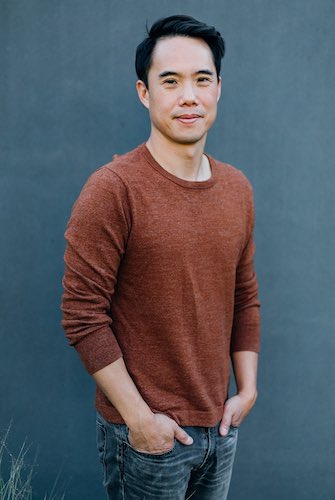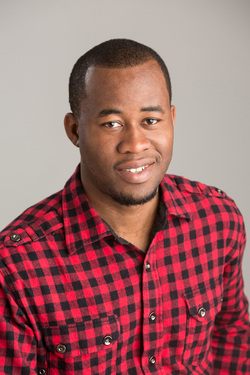The Tell (Harper Perennial) is the story of Owen, a tall man whose height makes him alternately vulnerable and accidentally imposing, and his wife, Mira, director of an art school for disadvantaged children in Providence, Rhode Island. They live in Mira’s ancestral home, full of pricey, dusty treasures. Their problems are, at first, the humdrum ones of any number of contemporary domestic novels: money is tight (Owen wonders why Mira doesn’t sell some heirlooms), Mira can’t sleep, Owen’s job teaching middle school frustrates him, and they are haunted by the house next door, where an old woman died who wasn’t discovered for weeks.
A three-body problem begins when Wilton Deere, the one-time star of a sitcom whose re-runs Mira watches late at night, moves into the dead woman’s house. Magnetic and squirrelly, Wilton draws the couple in, posing with his has-been presence the question that the novel first appears to focus on: how can you tell whether the life you’re living is real? And how do you narrate it back to yourself? All of the characters have experienced pivotal events they might rather read about in a satisfying novel or half-hour sitcom than experience their hairy aftermath day after day.
These questions seem, in the first chapters, to be sharp ones for realist fiction. Although the novel’s structure doesn’t push realist boundaries, its first half potentially contributes to a conversation about realism and the novel, and how characters might, in an almost self-aware way, see themselves as “novelistic”: Wilton, couched in the world of television, searches for epiphany, a realist hallmark, while Owen, who could be described as a realist in the practical sense, finds Wilton’s search and his crumbs of wisdom garish. But both, searching or not, constantly fail to find authenticity: Owen in his students, Wilton in an estranged daughter he’s moved to Providence to be near.
At first, the lure of epiphany can’t seem to reach Mira. Given a nineteenth-century symbolic association with vision (wears glasses, runs an art school, and her name means “look” in Spanish), she nonetheless lacks the naïve revelations her husband and Wilton try to have, even when such moments would move the novel forward. When Wilton first appears next door, Owen’s third-person perception is that “[Wilton’s] face was a coin coppered in the last angle of the sun,” a hyper-literary image that fast-forwards to the novel’s later themes of aging and financial excess. But Mira, when asked if she knows him, says,
“‘For a second I thought I did.’ She rubbed her eyes behind her glasses and rose on her bare feet for a better look. ‘But now I’m not sure. I can’t really see.’”
While the novel continues in this vein, Wilton behaves like a doomed rom-com (or realist novel) hero, looking for love in all the wrong places. He shows up in Owen’s classroom unannounced, telling him afterward that he’s “seen more today that’s amazing and real than I have in a long, long time.” Owen plays the skeptical critic, even seeming to respond to Kaplan’s literary excesses in parallel with Wilton’s schmaltz. When Wilton introduces himself, his laugh is “an expensive bauble.” “Too many words, Owen decided. Too much padding around it all, too theatrical, too chattering. What was the guy really trying to say? And who talked like that?”
But this provocative self-awareness vanishes when the plot begins to take over in the second half. Where Owen at first embodied his (and perhaps the novel’s) doubts about a search for the real, in the book’s latter chapters we’re only told he has those doubts. Themes beget predictable offspring. Wilton’s daughter appears and tangles appropriately with each character in turn. In a belated response to Owen’s past trauma, his father offers him something that divides Owen from his wife. That long-ago disaster, we’re meant to understand, is the psychological spool from which the entire story unfurls, the source of Owen’s floundering and the near-dissolution of his marriage.
Once Kaplan gives us Owen-on-the-analyst’s couch (his childhood watching television, the trauma, his escape to Mira) the novel achieves narrative integrity by building a complete world for its characters, but edges into overabundance. Kaplan’s sentences are often gorgeous still-lifes whose beauty is as essential as the way they move the novel forward. However, their virtuosity seems at odds with the novel’s early, pithy ideas. For the plot, even as it veers into excess, touches points that would have been consistent with a sharper interrogation of the characters’ ways of seeing: Mira finally gives in to her own version of false epiphany, a gambling addiction; Wilton, still the believer, reveals a secret to Owen that shows him to be the architect of his own lack and his failed search to fill it; Owen remains suspicious of Wilton’s TV-ready intimacies and their effect on Mira.
In choosing to fully embrace her great sensual and metaphorical instincts, Kaplan clouds the opportunity to engage clearly with her characters’ doubts about the trajectory of life-as-novel or novel-as-life that grounded the narrative in the early pages. In short, in a story about questioning what you know and see, we ultimately see too much to experience the characters’ questions along with them.

The Tell (Harper Perennial) is the story of Owen, a tall man whose height makes him alternately vulnerable and accidentally imposing, and his wife, Mira, director of an art school for disadvantaged children in Providence, Rhode Island. They live in Mira’s ancestral home, full of pricey, dusty treasures. Their problems are, at first, the humdrum ones of any number of contemporary domestic novels: money is tight (Owen wonders why Mira doesn’t sell some heirlooms), Mira can’t sleep, Owen’s job teaching middle school frustrates him, and they are haunted by the house next door, where an old woman died who wasn’t discovered for weeks.
A three-body problem begins when Wilton Deere, the one-time star of a sitcom whose reruns Mira watches late at night, moves into the dead woman’s house. Magnetic and squirrelly, Wilton draws the couple in, posing with his has-been presence the question that the novel first appears to focus on: how can you tell whether the life you’re living is real? And how do you narrate it back to yourself? All of the characters have experienced pivotal events they might rather read about in a satisfying novel or half-hour sitcom than experience their hairy aftermath day after day.
These questions seem, in the first chapters, to be sharp ones for realist fiction. Although the novel’s structure doesn’t push realist boundaries, its first half potentially contributes to a conversation about realism and the novel, and how characters might, in an almost self-aware way, see themselves as “novelistic”: Wilton, couched in the world of television, searches for epiphany, a realist hallmark, while Owen, who could be described as a realist in the practical sense, finds Wilton’s search and his crumbs of wisdom garish. But both, searching or not, constantly fail to find authenticity: Owen in his students, Wilton in an estranged daughter he’s moved to Providence to be near.
At first, the lure of epiphany can’t seem to reach Mira. Given a nineteenth-century symbolic association with vision (wears glasses, runs an art school, and her name means “look” in Spanish), she nonetheless lacks the naïve revelations her husband and Wilton try to have, even when such moments would move the novel forward. When Wilton first appears next door, Owen’s third-person perception is that “[Wilton’s] face was a coin coppered in the last angle of the sun,” a hyper-literary image that fast-forwards to the novel’s later themes of aging and financial excess. But Mira, when asked if she knows him, says,
“‘For a second I thought I did.’ She rubbed her eyes behind her glasses and rose on her bare feet for a better look. ‘But now I’m not sure. I can’t really see.’”
While the novel continues in this vein, Wilton behaves like a doomed rom-com (or realist novel) hero, looking for love in all the wrong places. He shows up in Owen’s classroom unannounced, telling him afterward that he’s “seen more today that’s amazing and real than I have in a long, long time.” Owen plays the skeptical critic, even seeming to respond to Kaplan’s literary excesses in parallel with Wilton’s schmaltz. When Wilton introduces himself, his laugh is “an expensive bauble.” “Too many words, Owen decided. Too much padding around it all, too theatrical, too chattering. What was the guy really trying to say? And who talked like that?”
But this provocative self-awareness vanishes when the plot begins to take over in the second half. Where Owen at first embodied his (and perhaps the novel’s) doubts about a search for the real, in the book’s latter chapters we’re only told he has those doubts. Themes beget predictable offspring. Wilton’s daughter appears and tangles appropriately with each character in turn. In a belated response to Owen’s past trauma, his father offers him something that divides Owen from his wife. That long-ago disaster, we’re meant to understand, is the psychological spool from which the entire story unfurls, the source of Owen’s floundering and the near-dissolution of his marriage.
Once Kaplan gives us Owen-on-the-analyst’s couch (his childhood watching television, the trauma, his escape to Mira) the novel achieves narrative integrity by building a complete world for its characters, but edges into overabundance. Kaplan’s sentences are often gorgeous still-lifes whose beauty is as essential as the way they move the novel forward. However, their virtuosity seems at odds with the novel’s early, pithy ideas. For the plot, even as it veers into excess, touches points that would have been consistent with a sharper interrogation of the characters’ ways of seeing: Mira finally gives in to her own version of false epiphany, a gambling addiction; Wilton, still the believer, reveals a secret to Owen that shows him to be the architect of his own lack and his failed search to fill it; Owen remains suspicious of Wilton’s TV-ready intimacies and their effect on Mira.
In choosing to fully embrace her great sensual and metaphorical instincts, Kaplan clouds the opportunity to engage clearly with her characters’ doubts about the trajectory of life-as-novel or novel-as-life that grounded the narrative in the early pages. In short, in a story about questioning what you know and see, we ultimately see too much to experience the characters’ questions along with them.






